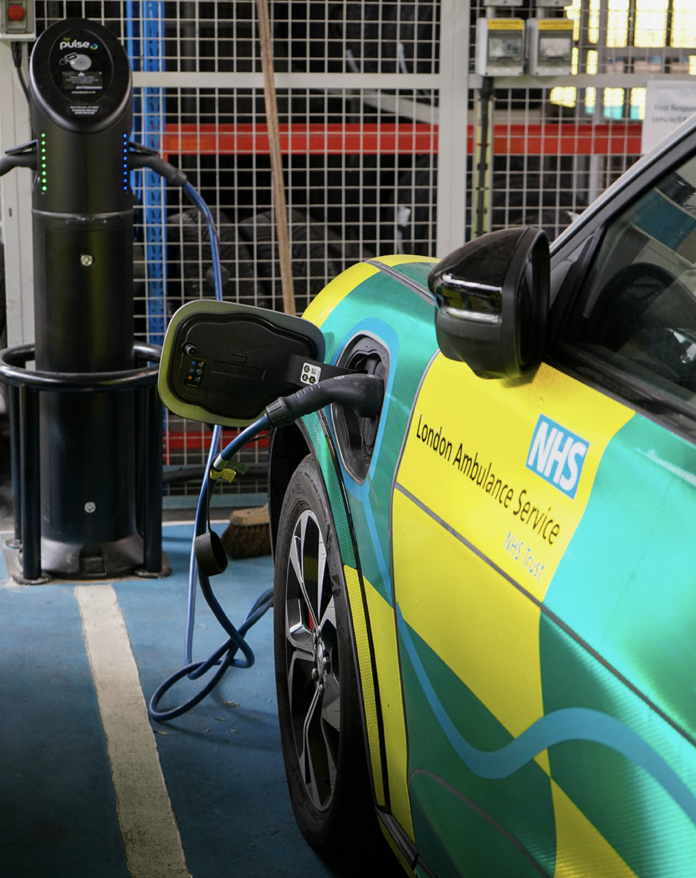The NHS operates the UK’s second-largest vehicle fleet — just behind Royal Mail — with more than 20,000 vehicles covering over 460 million miles a year. This includes everything from ambulances and patient transport to maintenance vans and essential deliveries, making the fleet a critical part of nationwide healthcare delivery.
But like any large transport operation, the NHS fleet comes with an environmental and health cost. Air pollution is linked to around 36,000 deaths in the UK each year, disproportionately affecting vulnerable people — the same communities the NHS serves. That’s why the organisation is targeting a fully decarbonised fleet by 2040.
To help achieve this, the government has announced a £63 million investment in electric vehicle infrastructure across the UK, with £8 million ringfenced for the NHS. This funding will deliver EV chargepoints across 62 NHS trusts and 224 sites, cutting running costs and enabling more zero-emission vehicle deployments.
The investment is projected to save the NHS £130 million over 25 years, with a payback period of just four years. Reduced fuel and maintenance spend will be reinvested into frontline services — a model any large fleet could replicate to free up capital for core operations.
Ambulance services are already trialling electric vehicles, with positive results in emissions reduction, air quality improvement, and whole-life cost savings. The £3.5 million portion of the NHS allocation for ambulance fleets will help all ten ambulance trusts expand charging capacity, supporting a wider EV rollout.
Industry leaders have welcomed the move:
Tracy Nicholls, CEO, College of Paramedics: “Over 1,200 new EV chargers at NHS sites is a vital step forward for sustainable ambulance services. The shift to electric not only cuts emissions, but saves money — both of which directly benefit patients and communities.”
Anna Parry, MD, Association of Ambulance Chief Executives: “Electric ambulances and response cars have already proven their value in trials, cutting pollution and offering long-term savings. This is a practical step toward a greener, more cost-efficient fleet.”
The NHS example shows that with clear targets, strategic investment, and operational trials, even the largest and most mission-critical fleets can start the transition to zero-emission operations — achieving both environmental and economic benefits.




